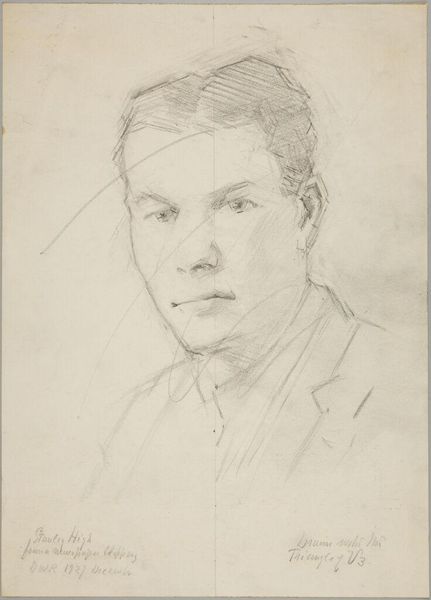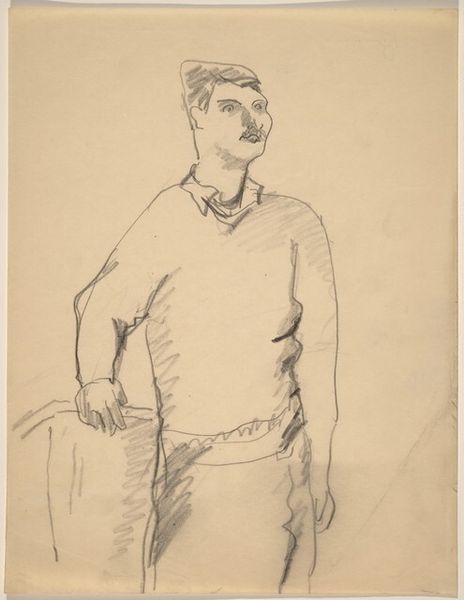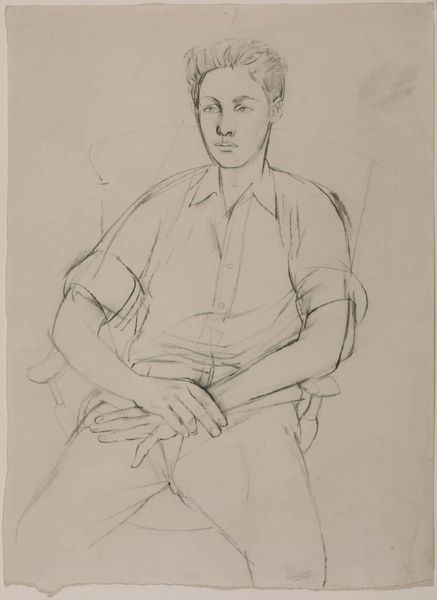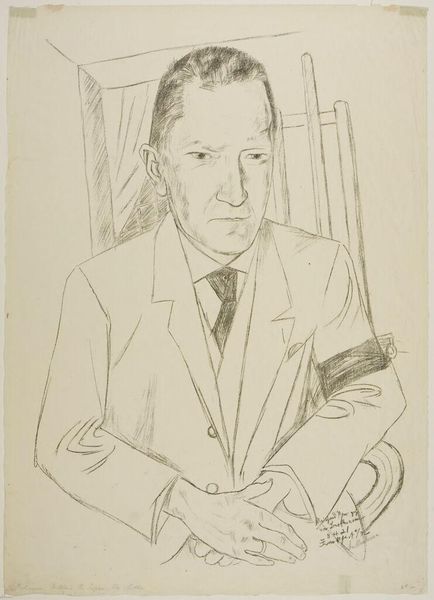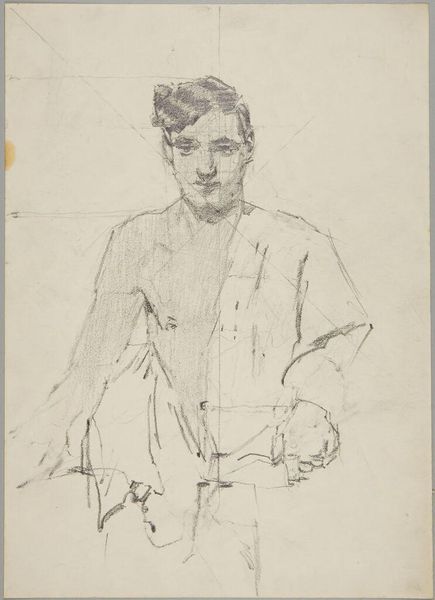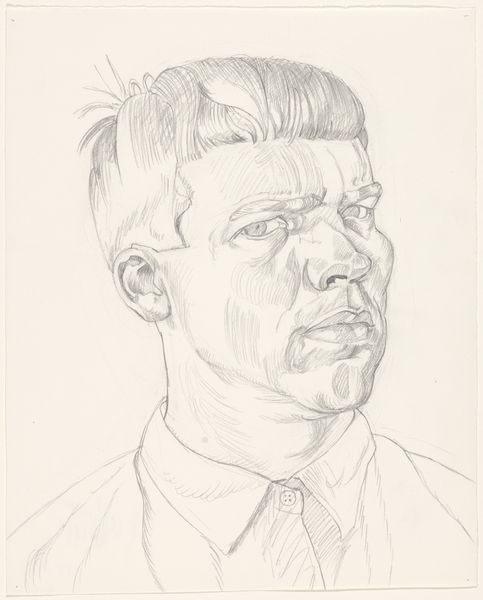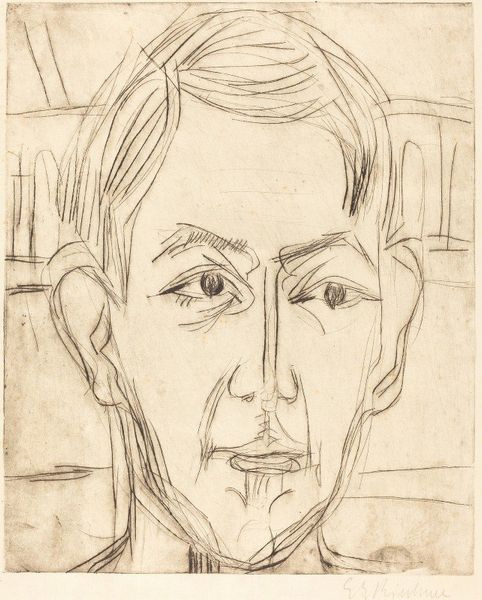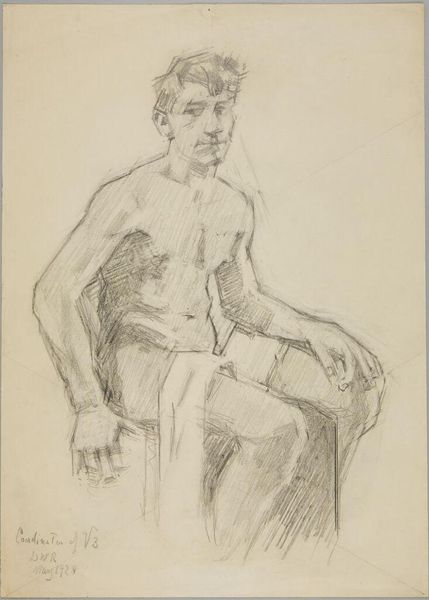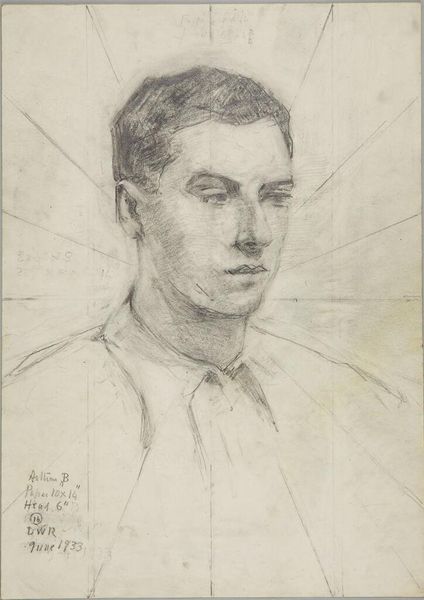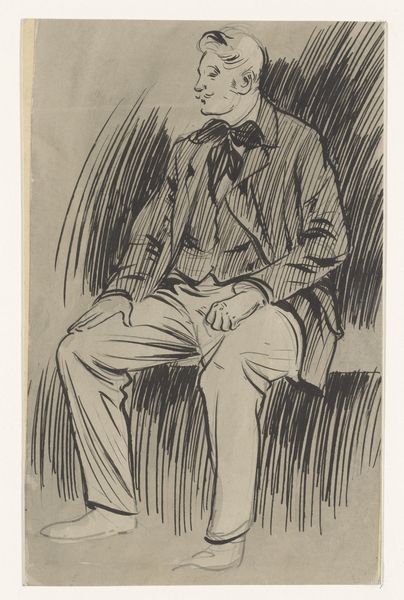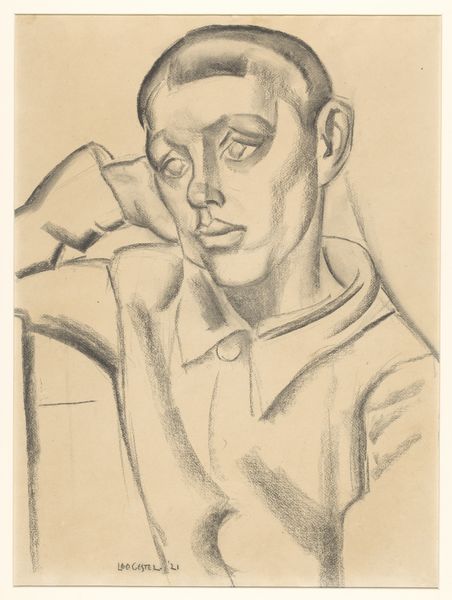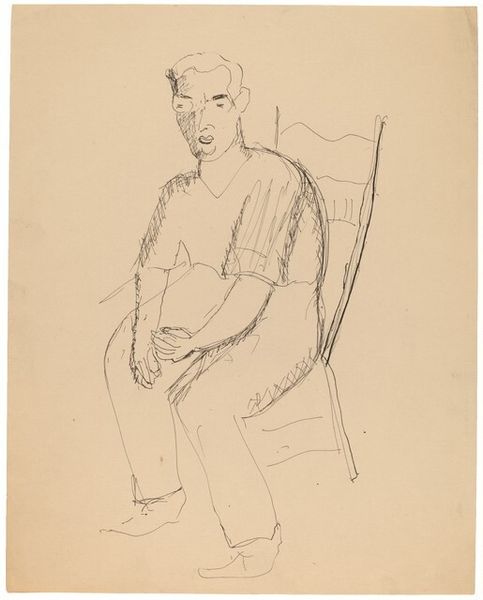
drawing, pencil, graphite
#
portrait
#
drawing
#
figuration
#
pencil drawing
#
pencil
#
graphite
#
portrait drawing
#
academic-art
#
modernism
Copyright: Public Domain: Artvee
Editor: This is Nils Dardel’s “Ola Bull,” a pencil drawing from 1926. It feels like a very straightforward, almost academic portrait, yet the subject's gaze feels somewhat detached. How do you interpret this work within its historical context? Curator: Well, considering the drawing dates to 1926, a period of significant social and artistic upheaval, it's interesting to see Dardel employing such traditional techniques. However, there's a certain flatness, a lack of deep psychological insight that departs from earlier portrait traditions. Do you notice how the lines are almost schematic? Editor: I do. It's as if he's consciously avoiding sentimentality. But why? Was there a specific artistic movement influencing this choice? Curator: Modernism was certainly a strong influence, rejecting bourgeois values and representational norms. Consider the role of portraiture at this time. Traditionally, it was a tool of the elite to affirm their power and status. Artists were pushing against this and experimenting with new ways to portray people, reflecting new social realities and questioning traditional authority. What statement might Dardel be making about representation itself by flattening his subject? Editor: So, by de-emphasizing individual character, perhaps Dardel is critiquing the traditional power dynamics inherent in portraiture, making a comment on society through the way he renders this one figure? Curator: Precisely! It invites us to consider the drawing not just as a likeness, but as a commentary on the very act of portraying someone. He’s moving portraiture away from simply commemorating an individual towards investigating what a portrait actually signifies within a rapidly changing cultural landscape. Editor: That’s fascinating. I wouldn't have considered the drawing in the context of questioning the politics of representation. Thank you! Curator: And I find it enlightening to consider your immediate impression and how that reflects our contemporary understanding of these historical shifts. Art reveals as much about its viewers as its subjects.
Comments
No comments
Be the first to comment and join the conversation on the ultimate creative platform.
